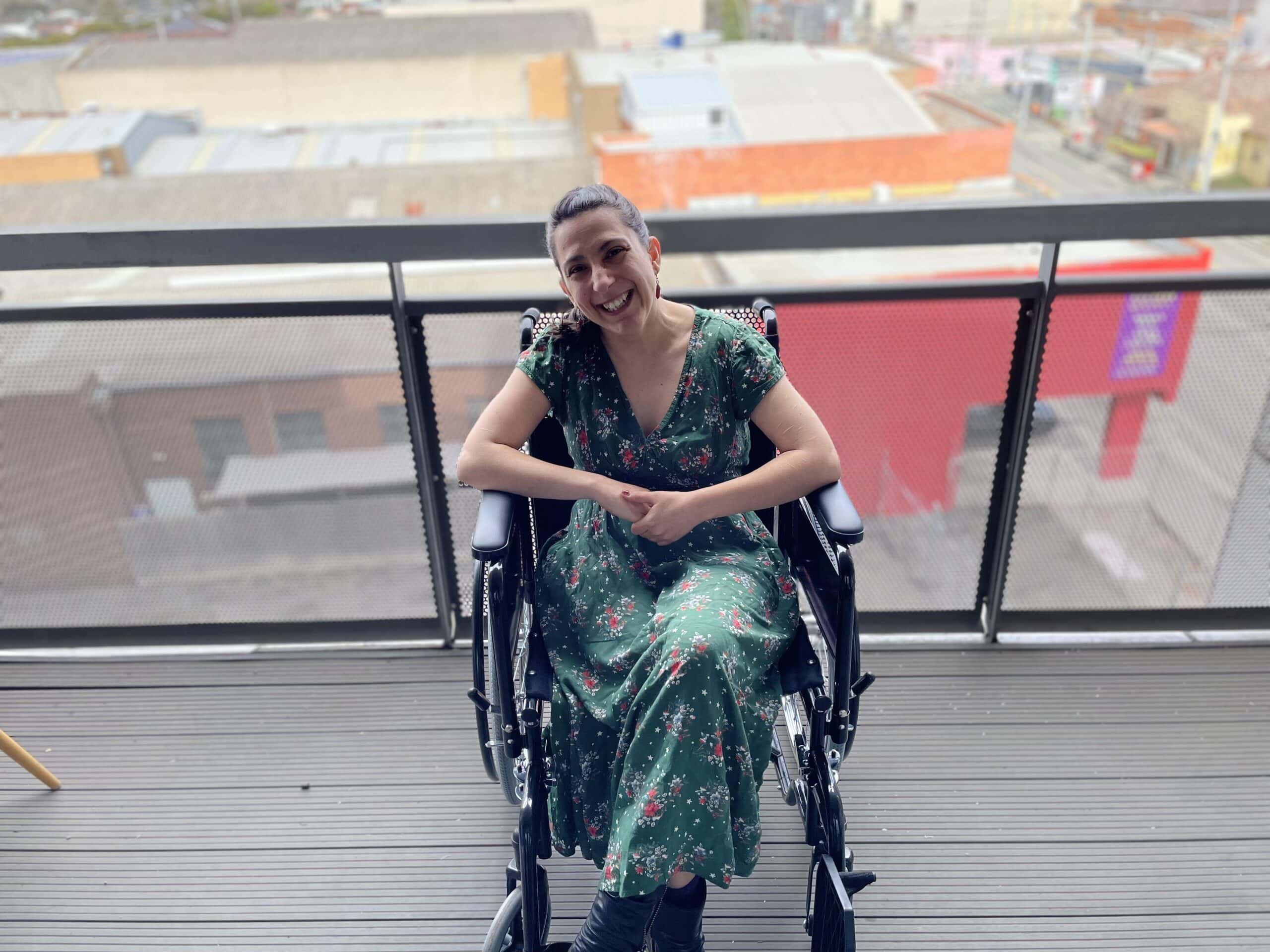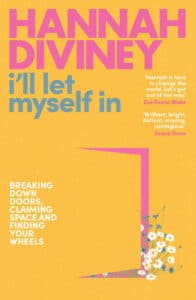
Laura Pettenuzzo is a guest blogger, a writer with cerebral palsy and a disability advocate living on Wurundjeri country. Passionate about accessibility, Laura writes Plain and Easy English content for various organisations, and her words have appeared in places like ABC, SBS and The Age.

Hannah Diviney is an advocate, actress, writer, podcaster and now – with the recent publication of I’ll Let Myself In: breaking down doors, claiming space and finding your wheels – an author. When the book was announced earlier this year, I was delighted (and, admittedly, a tad envious). For people with disability, so much of the world is inaccessible. Even for cis people like Hannah and I, who have cerebral palsy, one of the most visible and well-known disabilities. So, Hannah’s success is hard-won, and she doesn’t shy away from how hard she’s had to fight for equality. In her fight, I recognised so much of my own.
I’ve followed Hannah’s journey on social media for the past few years, and all her online openness and advocacy seems to have built the scaffolding that allowed her to craft this vulnerable and intensely readable memoir. Hannah’s conversational tone – evident in her articles, Instagram posts and sometimes-viral Tweets – is an invitation. As the cover suggests, she’s not only pushing open doors that have long been closed for people with disability, she’s also opening the door of her heart and mind.
And what a glorious cover it is, the bright colours and design evoking Hannah’s sunny disposition and relentless determination to carve a name and a space for herself in the world.
The memoir chronicles Hannah’s early life and advocacy (which began with her as the literal poster child for CPA!), including the struggles she faced finding genuine friendship and connection through primary school and high school. Hannah’s honesty about her loneliness and isolation are a testament to her commitment to shedding light on the very best and very worst of what it’s like to live with disability.
I particularly loved the section about working for a healthy brain, which “means marching forward, stumbling backward and falling sideways. It means accepting that a bad day isn’t a failure but just balance – and that it’s unrealistic to expect sunshine and rainbows all the time.”
I also appreciated Hannah’s essential reflections on the pandemic:
“disabled people have spent years asking and arguing for the right to do learning online and work from home…[but] when the whole world suddenly needed to rely on remote learning and working the powers that be figured it out pretty quickly…And that’s to say nothing of the often flippant way masks and isolation practices have been treated over the past few years. So many people I know have stayed in their bubble because while the world really wants to move on quickly and declare this inconvenience over, their health is still very much under threat.”
And this part about disability identity and pride was a highlight for me:
“My disability heavily influences the choices I do and don’t make. It is the framework through which I see and think about the world, and so it heavily affects what I value…Yes, my CP defines who I am but it does not define my worth.”
In terms of accessibility, I’ll Let Myself In consists of short chapters and relatively large, well-spaced font. There’s also an ebook and audiobook (which Hannah narrates) and these formats ensure that the book will be available to the widest possible audience, as all books should be.
Hannah’s book is bursting with her trademark feminism and disability pride. Most importantly, as Hannah lets herself in, readers are reminded that we, too, can change our lives and the world. I would rate I’ll Let Myself In as 4.5 stars.